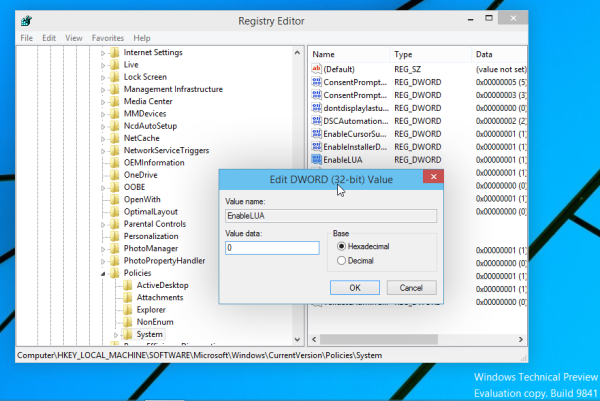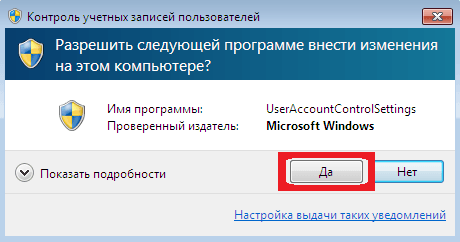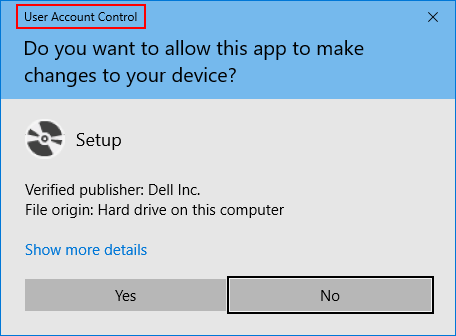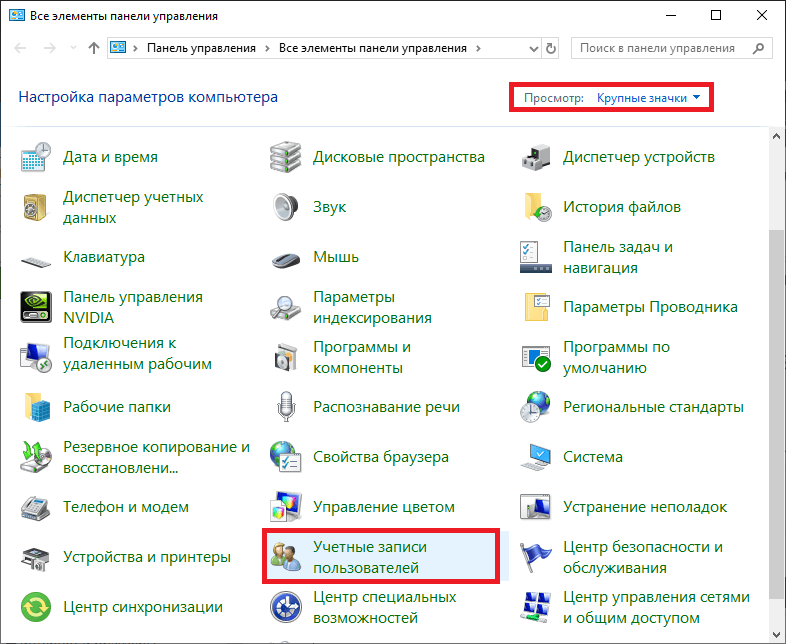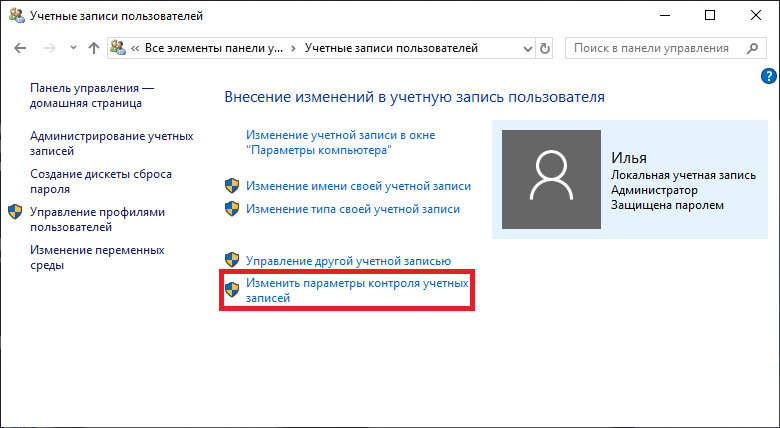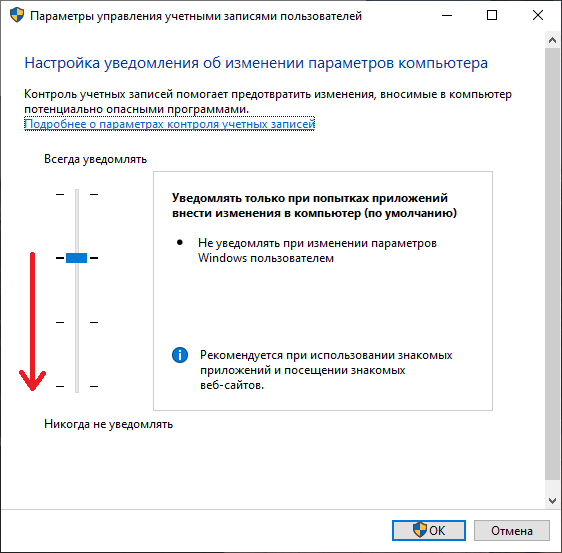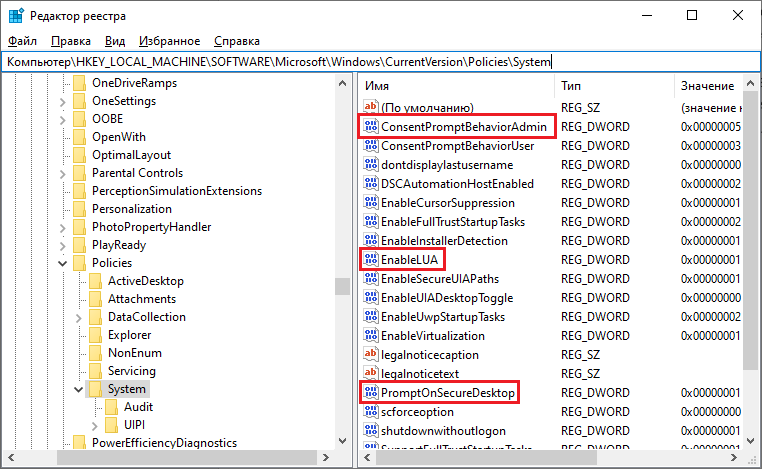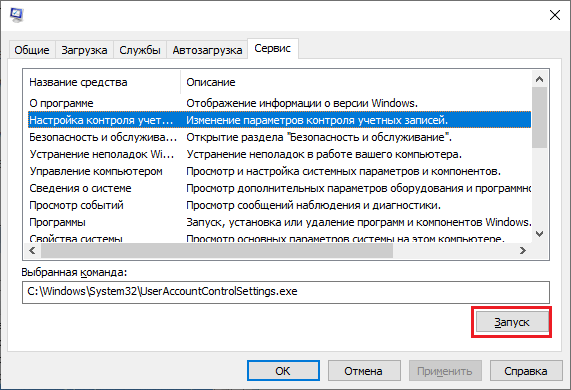
По умолчанию UAC включен и требует подтверждения для любых действий, могущих оказать влияние на операционную систему, однако вы можете отключить UAC или настроить его уведомления удобным для себя способом. В конце инструкции также имеется видео, где показаны оба способа отключения контроля учетных записей Windows 10. Примечание: если даже при отключенном контроле учетных записей какая-то из программ не запускается с сообщением, что администратор заблокировал выполнение этого приложения, должна помочь эта инструкция: Приложение заблокировано в целях защиты в Windows 10.
- Отключение контроля учетных записей в панели управления Windows 10
- Изменение параметров UAC в редакторе реестра
- Отключение UAC в командной строке
- Как отключить контроль учетных записей в редакторе локальной групповой политики
- Видео инструкция
Как отключить контроль учетных записей в панели управления Windows 10
Первый способ — использовать соответствующий пункт в панели управления Windows 10 для изменения настроек контроля учетных записей. Прежде чем приступить, учитывайте, что для отключения UAC вам требуется наличие прав администратора. Если их нет, но вы хотите установить или запустить программу, может сработать способ из инструкции Как установить программу без прав администратора.
- Откройте панель управления, для этого можно использовать поиск в панели задач или нажать клавиши Win+R, ввести control и нажать Enter. А можно сразу перейти к 4-му шагу, нажав Win+R и введя UserAccountControlSettings
- В панели управления вверху справа в поле «Просмотр» вместо «Категории» установите «Значки», а затем откройте пункт «Учетные записи пользователей».
- В следующем окне нажмите «Изменить параметры контроля учетных записей».
- Далее вы можете вручную задать параметры UAC или отключить контроль учетных записей Windows 10, достаточно выбрать один из вариантов настроек работы UAC, каждый из которых пояснён далее.
Возможные варианты настроек контроля учетных записей в панели управления от верхнего к нижнему:
- Всегда уведомлять, когда приложения пытаются установить программное обеспечение или при изменении параметров компьютера — самый безопасный вариант, при любом своем действии, которое может что-то изменить, а также при действиях сторонних программ вы будете получать уведомление об этом. Обычные пользователи (не администраторы) должны будут ввести пароль для подтверждения действия.
- Уведомлять только при попытках приложений внести изменения в компьютер — этот параметр установлен в Windows 10 по умолчанию. Он означает, что контролируются только действия программ, но не действия пользователя.
- Уведомлять только при попытках приложений внести изменения в компьютер (не затемнять рабочий стол). Отличие от предыдущего пункта в том, что рабочий стол не затемняется и не блокируется, что в некоторых случаях (вирусы, трояны) может быть угрозой безопасности.
- Не уведомлять меня — UAC отключен и не уведомляет о каких-либо изменениях в параметрах компьютера, инициированных вами или программами.
Если вы решили отключить контроль учетных записей Windows 10, что является совсем не безопасной практикой, в дальнейшем следует быть очень внимательным, поскольку все программы будут иметь к системе тот же доступ, что и вы, в то время как контроль учетных записей не сообщит, если какая-то из них может повлиять на работу системы. Иными словами, если причина отключения UAC только в том, что он «мешает», я настойчиво рекомендую включить его обратно.
Изменение параметров контроля учетных записей в редакторе реестра
Отключение UAC и выбор любого из четырех вариантов работы контроля учетных записей Windows 10 возможен и с помощью редактора реестра (чтобы запустить его нажмите Win+R на клавиатуре и введите regedit).
Параметры работы UAC определяются тремя ключами реестра, находящимися в разделе
HKEY_LOCAL_MACHINE\SOFTWARE\Microsoft\Windows\CurrentVersion\Policies\System
Перейдите в этот раздел и найдите следующие параметры DWORD в правой части окна: PromptOnSecureDesktop, EnableLUA, ConsentPromptBehaviorAdmin. Для полного отключения контроля учетных записей достаточно изменить значение параметра EnableLUA на 0 (ноль), закрыть редактор реестра и перезагрузить компьютер.
Однако, когда вы меняете параметры UAC в панели управления, сама Windows 10 оперирует тремя параметрами одновременно и делает это несколько иначе (хотя предыдущий метод проще и быстрее). Далее привожу значения каждого из ключей PromptOnSecureDesktop, EnableLUA, ConsentPromptBehaviorAdmin в том порядке, как они указаны для разных вариантов оповещений контроля учетных записей.
- Всегда уведомлять — 1, 1, 2 соответственно.
- Уведомлять при попытках приложений изменить параметры (значения по умолчанию) — 1, 1, 5.
- Уведомлять без затемнения экрана — 0, 1, 5.
- Отключить UAC и не уведомлять — 0, 1, 0.
Отключение UAC в командной строке
Быстрый способ полностью отключить контроль учетных записей — использовать командную строку, для этого:
- Запустите командную строку от имени администратора, в Windows 10 для этого можно начать вводить «Командная строка» в поиск на панели задач, а когда найдется нужный результат — либо нажать по нему правой кнопкой мыши и выбрать нужный пункт меню, либо выбрать «Запуск от имени администратора» в панели справа.
- Введите команду (нажав Enter после ввода)
reg ADD HKLM\SOFTWARE\Microsoft\Windows\CurrentVersion\Policies\System /v EnableLUA /t REG_DWORD /d 0 /f
- Закройте командную строку и перезапустите компьютер или ноутбук.
По своей сути этот метод является вариантом способа с редактором реестра, который описан выше: просто нужный параметр изменяется с помощью указанной команды.
Как отключить контроль учетных записей UAC в редакторе локальной групповой политики Windows 10
Этот метод подойдёт для Windows 10 Pro и Enterprise, где присутствует редактор локальной групповой политики. Шаги будут следующими:
- Нажмите клавиши Win+R на клавиатуре, введите gpedit.msc и нажмите Enter.
- В редакторе перейдите к разделу «Конфигурация компьютера» — «Конфигурация Windows» — «Параметры Безопасности» — «Локальные политики» — «Параметры безопасности».
- В правой панели найдите параметр «Контроль учетных записей: все администраторы работают в режиме одобрения администратором» и дважды нажмите по нему.
- Установите параметр в значение «Отключен» и нажмите «Ок».
Перезагрузка компьютера обычно не требуется.
Видео
В завершение еще раз напомню: я не рекомендую отключать контроль учетных записей ни в Windows 10 ни в других версиях ОС, если только вы абсолютно точно не знаете, для чего вам это нужно, а также являетесь достаточно опытным пользователем.
Contents
- 1 How to Disable UAC in Windows 10 via the Control Panel
- 2 How to Turn off Windows 10 UAC via Registry Editor
- 3 How to Disable UAC via the Local Group Policy Editor
Windows 10 User Account Control (UAC) dialogs can be frustrating. They add an additional step to the process each time you run an exe file or run a program as administrator. As a result, it’s tempting to disable UAC in Windows 10 entirely, but you should understand the risks associated with such a change.
What is UAC in Windows 10?
User Account Control in Windows 10 is an integral part of the OS’ security. When an app attempts to make changes to your PC, it steps in, asking for confirmation. Accepting allows the program to temporarily act with the full rights of the user: administrator rights.
Without UAC, it may be trivial for malware to compromise your computer. Applications will not require your approval to make changes to your system and may make modifications without your knowledge.
As a result, we can only recommend you disable UAC in specific circumstances. For example, if you have a user account with no administrative privileges and a separate admin account to perform any installation or configuration tasks.
If you’re confident you’ll be secure, this guide will show you how to turn off UAC in Windows 10 via the Control Panel, Registry, or Local Group Policy Editor.
Disabling UAC via the Control Panel is the most user-friendly route and leaves little room for error. However, it’s worth noting that you’ll still need administrator rights to be able to do this. Switch to your admin account if you need to, or ask your IT department if you’re in an enterprise or education scenario.
- Open Control Panel
Press Start and type “Control Panel“. Click the top result, “Control Panel”, in the Start menu.
- Click”User Accounts” in the Control Panel
- Click “User Accounts” again
- Press “Change User Account Control settings”
At this point, you’ll need to accept a UAC prompt to make changes.
- Turn off UAC in Windows 10
In the User Account Control Settings window, you’ll see a slider under the heading “Choose when to be notified about changes to your computer”. To disable user account control entirely, move the slider down until it says “Never notify”.
Click “OK” and agree to your final UAC prompt.
How to Turn off Windows 10 UAC via Registry Editor
Power users can disable user account control via the registry if they don’t enjoy the control panel interface or have limited access to it.
- Open the Registry Editor
Press the Start button and type “Registry Editor”. Click the top result in the Start menu.
- Modify the “EnableLUA” DWORDDisabling UAC via the registry is still quite easy. In its search bar, paste
Computer\HKEY_LOCAL_MACHINE\SOFTWARE\Microsoft\Windows\CurrentVersion\Policies\System.In the main pane, scroll down the list or press E on your keyboard until you find an entry called “EnableLUA”. Double-click it to open the DWORD editor and change the “Value data” field to “0”. If you don’t have the DWORD value, you can create it yourself. Once you’re done, press “OK” to save the changes and then restart your computer.
How to Disable UAC via the Local Group Policy Editor
Users with Windows 10 Pro or higher additionally have access to the Group Policy Editor, commonly known by its filename, gpedit. This performs similar changes to Regedit but offers a more safe and intuitive interface.
- Open gpedit
Press Start and type “gpedit”. Click the first result in your Start menu, which should read “Edit group policy”.
- Double-click the User Account Control policy
Navigate to “Windows settings > Security Settings > Local Policies > Security Options”. In the main panel, scroll until you find “User Account Control: Run all administrators in Admin Approval Mode” if you’d like to turn off UAC.
- Disable User Account Control
Change the toggle from “Enabled” to “Disabled”. Press “OK” to disable UAC in Windows 10.
We covered the various methods to disable UAC today, but there are other User Account Control options that you may want to consider. Here’s a full list (via Microsoft):
| Registry key | Group Policy setting | Registry setting |
|---|---|---|
| FilterAdministratorToken | User Account Control: Admin Approval Mode for the built-in Administrator account | 0 (Default) = Disabled 1 = Enabled |
| EnableUIADesktopToggle | User Account Control: Allow UIAccess applications to prompt for elevation without using the secure desktop | 0 (Default) = Disabled 1 = Enabled |
| ConsentPromptBehaviorAdmin | User Account Control: Behavior of the elevation prompt for administrators in Admin Approval Mode | 0 = Elevate without prompting 1 = Prompt for credentials on the secure desktop 2 = Prompt for consent on the secure desktop 3 = Prompt for credentials 4 = Prompt for consent 5 (Default) = Prompt for consent for non-Windows binaries |
| ConsentPromptBehaviorUser | User Account Control: Behavior of the elevation prompt for standard users | 0 = Automatically deny elevation requests 1 = Prompt for credentials on the secure desktop 3 (Default) = Prompt for credentials |
| EnableInstallerDetection | User Account Control: Detect application installations and prompt for elevation | 1 = Enabled (default for home) 0 = Disabled (default for enterprise) |
| ValidateAdminCodeSignatures | User Account Control: Only elevate executables that are signed and validated | 0 (Default) = Disabled 1 = Enabled |
| EnableSecureUIAPaths | User Account Control: Only elevate UIAccess applications that are installed in secure locations | 0 = Disabled 1 (Default) = Enabled |
| EnableLUA | User Account Control: Run all administrators in Admin Approval Mode | 0 = Disabled 1 (Default) = Enabled |
| PromptOnSecureDesktop | User Account Control: Switch to the secure desktop when prompting for elevation | 0 = Disabled 1 (Default) = Enabled |
| EnableVirtualization | User Account Control: Virtualize file and registry write failures to per-user locations | 0 = Disabled 1 (Default) = Enabled |
Before you make any of these changes, however, we recommend you read our existing literature on the Registry Editor. Learn how to safely use regedit and create an automatic registry backup so you’re fully prepared.
Disable UAC In Windows 7,8,10,11
If you have chosen Windows as one of your operating systems, you may encounter this problem after a while and intend to turn off this feature. In this article, we will explain practical methods to Disable UAC Windows 10
What is Uac in windows
User Account Control (UAC) is a security feature in Microsoft Windows operating systems that is designed to help prevent unauthorized changes to a computer. UAC works by prompting users for confirmation or administrator credentials before allowing certain actions, such as installing software, making system changes, or accessing sensitive data. By requiring user approval for these actions, UAC helps reduce the risk of malware and other security threats that could harm a computer or compromise its data. UAC has been a standard feature in Windows since the release of Windows Vista, and it continues to be an important part of Windows security today.
Table Of Contents
- Disable UAC In Windows 7,8,10,11
- What is Uac in windows
- How to turn off (UAC) user account control
- what is user account control windows 10?
- How to find (UAC) user account control is on or off
- User account control «disable uac windows 10»
- Registry disable UAC
- Disable UAC in windows 10 with software
- Registry disable UAC
- how to turn off uac temporarily
- DISABLE UAC BY COMMAND lINE PROMPT
- Disable UAC Server 2016
- how to enable uAC on windows 8,8.1,10,11
How to turn off (UAC) user account control
what is user account control windows 10?
Before turning off windows uac, you should know when this function is used. This feature helps you limit if a program requests certain changes in the registry or system files of your windows. By disabling uac windows, you will allow all programs to make these changes. which is not good for your computer in terms of security
How to find (UAC) user account control is on or off
The easiest way to find out whether this feature is active in your Windows or not is that if this option is active in your Windows, during the installation of programs, Windows will show you a window and ask you to press the button Yes, allow the installation or click no to cancel the installation of the program
If you have turned off this option, this above message will no longer be displayed for you.
User account control “disable uac windows 10”
If you are sure enough about the programs you are going to install, you can easily disable this option temporarily or permanently. To disable it, just go to the start menu and just type uac.
then press enter , new windows show up , now you can change it manually.
In the User Account Control Settings window, pull down the slider on the left side to reach the Never Notify settings. Now click on the OK button. you can back all things to the normal by pulling slider up and select default.
You Can watch video here ….
Registry disable UAC
In the second method, we disable UAC through the Registry. To do this, first open the RUN window by pressing the Windows + R keys and type REGEDIT and press Enter.
after opening registry editor go to this address
HKEY_LOCAL_MACHINE \ SOFTWARE \ Microsoft \ Windows \ CurrentVersion \ Policies \ System
On the right side of the window, there is a DWORD named EnableLUA that you should double click on to open it, then set the value to zero (0). Note that if this DWORD does not exist, right-click on the same page and select DWORD and assign the same name to it and set the Value to zero.
Finally, restart the system.
Disable UAC in windows 10 with software
You can activate and deactivate UAC by using the external software called Winaero Tweaker, which is small and free. Run this software and click on Disable UAC in the User Accounts section and select Disable UAC on the right side of the screen. You can use this software in Windows 7 and 8.1 in addition to Windows 10.
how to turn off uac temporarily
To turn off UAC (User Account Control) temporarily on a Windows operating system, follow the steps below:
- Press the Windows key + R to open the Run dialog box.
- Type “msconfig” and press Enter.
- Click on the “Tools” tab at the top of the System Configuration window.
- Scroll down and select “Change UAC Settings” from the list of tools, then click on the “Launch” button.
- Slide the bar down to the bottom, to the “Never Notify” position, and click on “OK”.
- Restart your computer for the changes to take effect.
Please note that disabling UAC can expose your computer to potential security risks, so it is recommended to turn it back on once you have finished performing the tasks that require it to be disabled. To turn UAC back on, follow the same steps and slide the bar back up to the desired notification level.
DISABLE UAC BY COMMAND lINE PROMPT
To disable UAC (User Account Control) using the Command Prompt, you can follow these steps:
- Open the Command Prompt as an administrator. Right-click on the “Start” button, select “Command Prompt (Admin)” or “Windows PowerShell (Admin)”.
- In the Command Prompt window, type the following command and press Enter:
reg.exe ADD HKLM\SOFTWARE\Microsoft\Windows\CurrentVersion\Policies\System /v EnableLUA /t REG_DWORD /d 0 /fThis command modifies the Windows Registry to disable UAC.
- Restart your computer to apply the changes. After the restart, UAC will be disabled.
Please note that disabling UAC can have security implications as it reduces the overall security of your system. It’s recommended to only disable UAC if you have a good reason to do so and understand the potential risks involved.
✅Disable User Account Control Windows 11, 10, 8.1, 7 \ Disable UAC Windows 10 Prompt\Simply & Easily
if you have any questions about
Disable UAC Server 2016
or
how to enable uAC on windows 8,8.1,10,11
just leave a comment below
4.8/5 — (9 Vote By people)
Skip to content
User Account Control, or just UAC is a part of the Windows security system which prevents apps from making unwanted changes on your PC. When some software tries to change system-related parts of the Registry or the file system, Windows 10 shows an UAC confirmation dialog, where the user should confirm if he really wants to make those changes. Thus, UAC provides a special security environment for your user account with limited access rights and can elevate a particular process to full access rights when necessary. However, many users are not happy to see these UAC prompts and prefer to use Windows 10 with the classic security model, i.e. by creating limited and administrator accounts like in Windows XP and earlier. If you are one of those users, here is how to disable UAC and get rid of its popups in Windows 10.
There are two ways to disable UAC in Windows 10, we will review both.
Option one: Disable UAC via the Control Panel
To disable UAC using the Control Panel options, you need to do the following:
- Open Control Panel.
- Go to the following path:
Control Panel\User Accounts and Family Safety\User Accounts
There you will find the Change User Account Control settings link. Click it.
Alternatively, you can click the Start button to open the Start menu and type the following in the Search box:
uac s
Click ‘Change User Account Control settings’ in the search results:
- In the User Account Control settings dialog, move the slider to the bottom (Never Notify):
Click OK. This will disable UAC.
Option two — Disable UAC with a simple Registry tweak
It is possible to turn off UAC using the Registry Editor.
- Open Registry Editor.
- Navigate to the following key:
HKEY_LOCAL_MACHINE\SOFTWARE\Microsoft\Windows\CurrentVersion\Policies\System
If you do not have such a Registry key, then just create it.
Tip: You can access any desired Registry key with one click. - In the right pane, modify the value of the EnableLUA DWORD value and set it to 0:
If you do not have this DWORD value, then create it. - Restart your computer.
The same can be done using Winaero Tweaker. Go to User Accounts -> Disable UAC: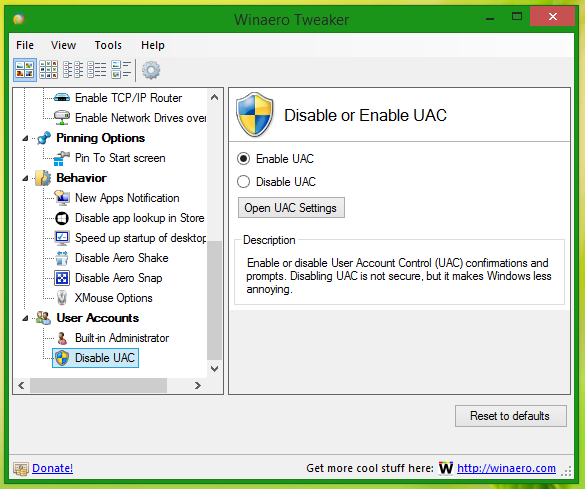
That’s it. Personally I always keep UAC enabled and do not recommend you to disable it. Having UAC enabled is additional protection from dangerous apps and viruses which can elevate silently if it is disabled and do anything malicious on your PC.
Support us
Winaero greatly relies on your support. You can help the site keep bringing you interesting and useful content and software by using these options:
If you like this article, please share it using the buttons below. It won’t take a lot from you, but it will help us grow. Thanks for your support!
Крупная часть нововведений, появившихся в Windows 10, была связана с усилением безопасности и контролем над действиями пользователя с правами администратора – от ограничений на запуск приложений вне «Microsoft Store» до встроенного антивируса «Защитника Windows». Нельзя сказать, насколько они плохи или хороши сами по себе, но сам факт усиления контроля над используемым ПО сложно отрицать.
Многие из этих функций могут препятствовать запуску нелицензионных приложений, но иногда и встроенная система безопасности допускает ошибки, или же просто оказывается чрезвычайно бдительной к действиям пользователя, например, к запуску программ с правами администратора.
Довольно стандартный вид для пользователей Windows 10
Для чего нужна система контроля учётных записей
Эта функция является далеко не новой – её история ведётся ещё с первых графических версий Windows. Предназначение этой функции лежит в коренном различии между работой в системах Linux и Windows – если в первой на каждое действие с правами администратора требовалось ручное подтверждение с введением пароля, то вторая достаточно долго брезговала предупреждениями при запуске приложений.
Почему это важно? Права администратора предоставляют использующей их утилите полный доступ к системе – если такие права попадут к вредоносному приложению, то вряд ли что-то остановит его в случае атаки на антивирусное ПО и, собственно, сам компьютер. Система контроля учётных записей, она же – User Account Control или UAC – впервые появилась на Windows Vista, и была призвана закрыть эту дыру в безопасности системы.
На практике это выглядит примерно следующим образом – при попытке запуска любого приложения с правами администратора будет появляться предупреждение, требующее ручного подтверждения соответствующих разрешений. Вот так эти уведомления выглядели на предыдущих версиях Windows и в 10-ом издании системы.
Несмотря на мелкие косметические изменения, система фактически не менялась с первого появления в Windows Vista
Суть выносимого предупреждения абсолютно не изменилась – Windows уточняет, точно ли мы желаем предоставить этому приложению права на внесение изменений в систему. Казалось бы, достаточно здравый интерес, но при частом использовании ПО с такими разрешениями прокликивание подтверждения превращается в сущую муку.
Стоит ли отключать UAC, чтобы избежать надоедливых уведомлений? Крайне спорный вопрос – эта не самая безопасная практика лишает систему одного из средств защиты от несанкционированного доступа к её ресурсам. Если мы всё же решим отключить систему контроля, стоит убедиться, что остальные средства защиты остаются в активном состоянии, и стараться не запускать подозрительные приложения, чтобы избежать заражения.
Что ж, мы всё же решили отключить систему контроля учётных записей. Чтобы сделать это штатными средствами, подойдут 3 способа.
Через «Панель управления»
Воспользуемся классической утилитой Windows для отключения UAC. Для этого:
- Откроем «Панель управления», запустив её любым удобным способом: поиском соответствующего приложения через меню «Поиск» или вводом команды «control» в «Командной строке».
- Обратимся к параметру «Просмотр» – он находится в верхнем правом углу – и выставим значение «Крупные значки».
Откроем раздел «Учётные записи» в «Панели управления»
- Откроем раздел «Учётные записи пользователей», нажав на ссылку с иконкой с двумя людьми.
- Нажмём на ссылку «Изменить параметры контроля учётных записей» – она является последней в правой панели.
Несмотря на появление меню «Параметры», все основные настройки так же осуществляются в «Панели управления»
- В новом окне мы увидим четырёхуровневый ползунок настройки UAC – по умолчанию он находится на третьем уровне. Для полного отключения сдвинем его вниз до конца.
Классический ползунок – довольно оригинальное решение для настройки одного из главных параметров безопасности Windows
- Нажмём на кнопку «ОК» и подтвердим внесённые изменения.
Используем «Редактор реестра»
Альтернативным методом отключения UAC будет прямой запрет на его активацию через реестр. В случае если мы используем этот метод, единственным способом повторной активации будет возвращение значений реестра на исходные.
Для деактивации контроля учётных записей в Windows 10:
- Откроем «Редактор реестра» любым подходящим нам способом – введя команду «regedit.msc» в «Командной строке» или утилите «Выполнить», найдя соответствующее приложение через меню «Поиск» или как-то иначе.
- В новом окне обратимся к левой панели – мы увидим визуальное представление файловой системы реестра. Перейдём по следующему пути: HKEY_LOCAL_MACHINE\ SOFTWARE\Microsoft\Windows\ CurrentVersion\Policies\System.
Для удобства можно просто скопировать путь в адресную строку в верхней части программы.
- В последней папке нам потребуется внести изменения в несколько параметров: PromptOnSecureDesktop, EnableLUA, ConsentPromptBehaviorAdmin. Их значения стоит выставлять в соответствии с этой схемой.
Значения указаны в порядке перечисленных параметров
- После внесения изменений закроем реестр и перезагрузим компьютер.
Через «Конфигурацию системы»
Последним способом станет использование достаточно редко вызываемого меню «Конфигурация системы». Для этого:
- Введём команду «msconfig» в меню «Поиск» и запустим соответствующее приложение. Также можно запустить его через утилиту «Выполнить» или «Командную строку».
- В новом окне обратимся к верхней панели и откроем вкладку «Сервис».
Одно из редко используемых меню всё же пригодится для настройки UAC
- Выделим пункт «Настройка контроля учётных записей» щелчком мыши и нажмём на кнопку «Запуск».
- В новом окне опустим ползунок до нижнего положения и нажмём на «ОК».
- Перезагрузим систему.
Воспользовавшись любым из вышеуказанных способов, мы сможем отключить систему UAC. И всё же, если единственная причина её отключения заключается в назойливых уведомлениях, рекомендуем ещё раз подумать, стоит ли оно того.
Post Views: 701
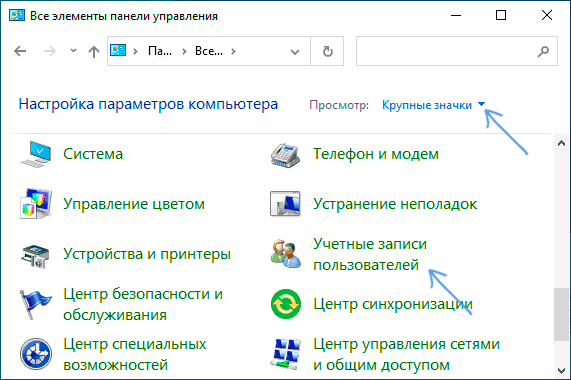
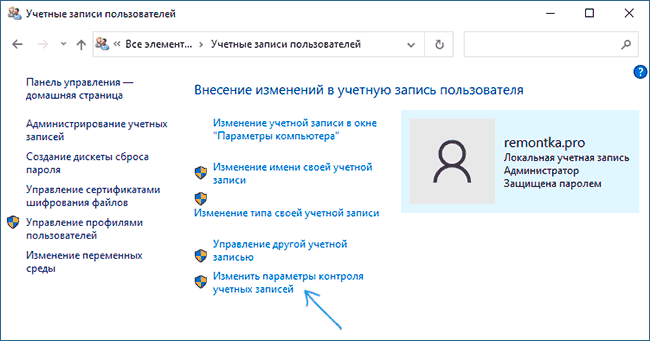
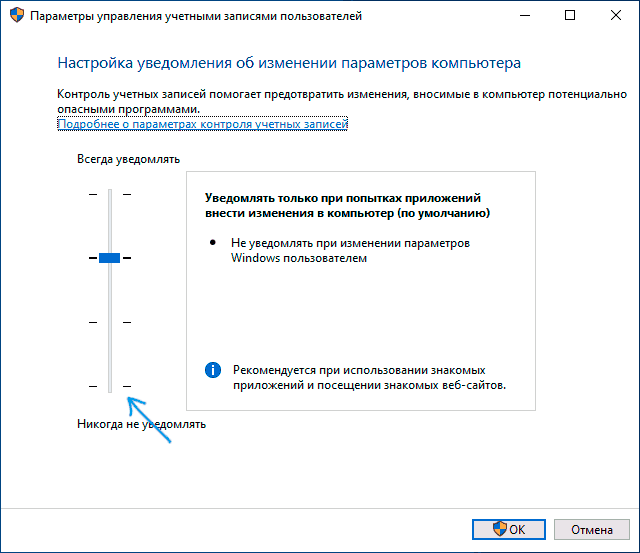
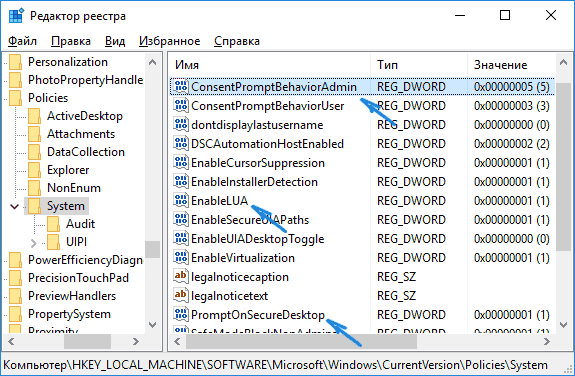
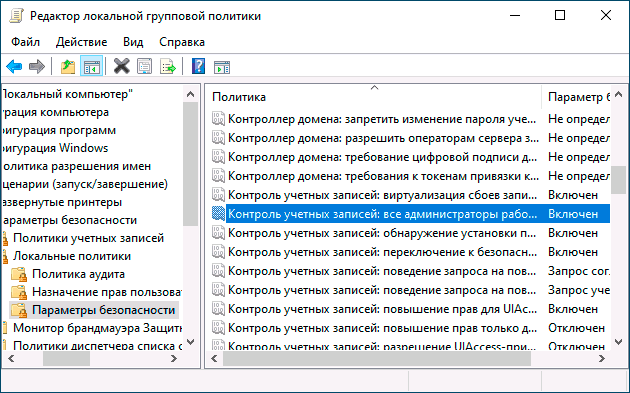
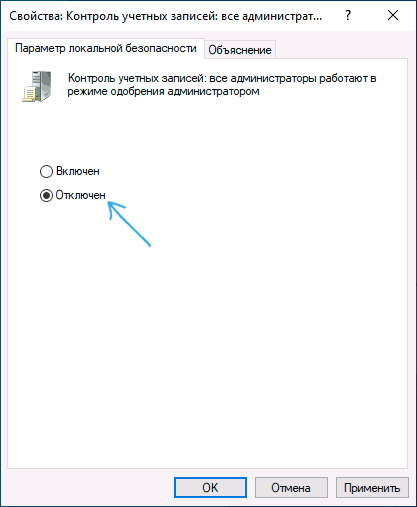
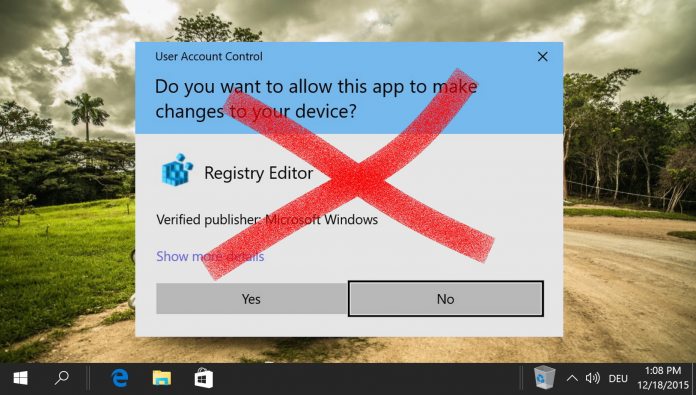










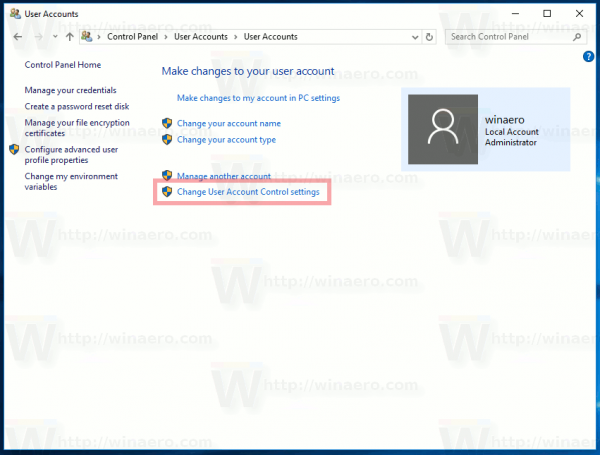
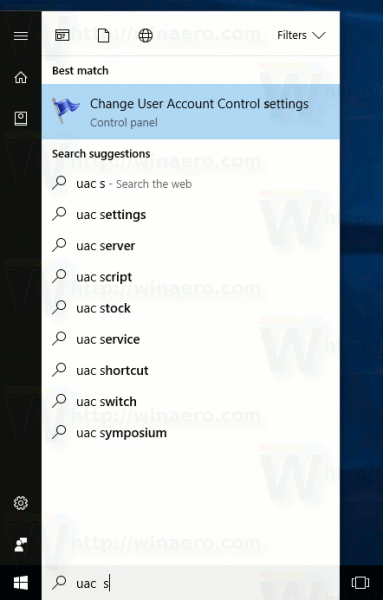
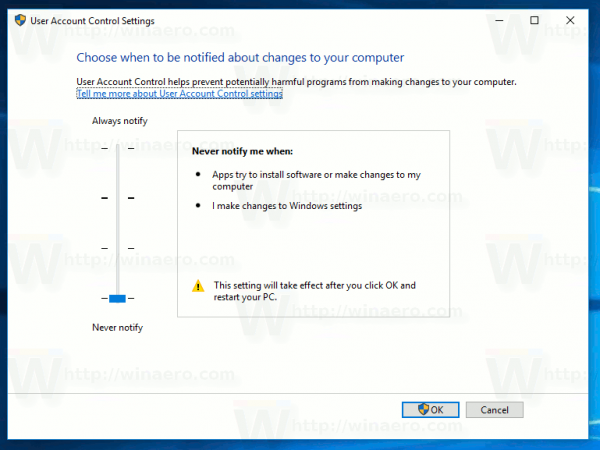 Click OK. This will disable UAC.
Click OK. This will disable UAC.